![]()
Introduction: English
There is a huge variety of bread types in Germany. German families buy their bread in one of many bakeries found on German high streets, either independent or part of local chains such as Dat Backhus or Nur Hier in Hamburg. Rye bread is the most popular. It can be made of pure rye flour or with mixed flours, with or without grains and seeds. On a Sunday afternoon it's quite typical to sit with friends and family members for coffee and cake. Favourites include Black Forest gateau, streusel cake or gugelhupf. During advent, people will have stollen and lebkuchen instead.
Introduction: German
Es gibt eine riesige Vielfalt von Brotsorten in Deutschland. Deutsche Familien kaufen ihr Brot in einer der vielen unabhängigen Bäckereien oder in Läden von lokalen Ketten wie zum Beispiel Dat Backhus oder Nur Hier in Hamburg. Roggenbrot ist die beliebteste Sorte. Es kann aus reinem Roggenmehl oder aus gemischten Mehl hergestellt werden, mit oder ohne Körner und Samen. An einem Sonntagnachmittag ist es üblich, mit Freunden und Familie beim Kaffee und Kuchen zu sitzen. Dazu gibt es dann Schwarzwälder-Kirschtorte, Streuselkuchen oder Gugelhupf. Im Advent, werden Christstollen und Lebkuchen gereicht.
At the bakery
-Guten Tag.
-Hallo. Ein kleines Rogenmischbrot, bitte.
-Bitteschön. Darf es noch etwas sein?
-Nein Danke. Das ist alles.
-Auf Wiedersehen.
-Tschüss!
Translation
-Hello.
-Hello. A small loaf of mixed rye bread please.
-Here you are. Would you like anything else?
-No thank you. That’s it.
-Goodbye!
-Goodbye.
Image: marttj under Creative Commons license
German
Wenn ich zum Bäcker gehe, kaufe ich gerne eine Butterbrezel. Butterbrezeln sind eine schwäbische Spezialität aber man bekommt Sie heute überall in Süddeutschland. Die Brezeln schmecken am besten, wenn sie frisch aus dem Ofen kommen und die Butter auf der Brezel schmilzt.
English
When I go into a bakery, I like to buy a buttered brezel. Buttered brezels are a Schwabian speciality, but nowadays you can get them all over the south of Germany. Buttered brezels are best when they are fresh from the oven and the butter is melting on it.
Image: Dennis under Creative Commons license
Das Roggenmischbrot
Roggenmischbrot is a sweet mixed flour rye bread with molasses.
It goes well with salted butter and the distinctive flavour and texture is created by using sprouted rye grains.
Image: Katrin Morenz under Creative Commons license
Die Schwarzwälderkirschtorte
Schwarzwälderkirschtorte, Black Forest gateau, is popular in English cafés and restaurants. Kirschwasser, the cherry flavour liquor in the gateau, is distilled in the Black Forest region of Germany and parts of Switzerland. The best place to find genuine Black Forest gateau is, of course, Germany. There are strict regulations covering the quantities of kirschwasser, whipped cream, buttercream and cocoa in this triple-layer celebration cake.
Image: Till Westermayer under Creative Commons license
Der Stollen
Stollen originates from Dresden, where Christstollen have been baked at Christmas since 1486.
This traditional spicy yeast cake contains butter, raisins, almonds, candied peel and marzipan. Stollen has become a popular part of Christmas festive events from Europe to the United States.
Image: Joana Petrova under Creative Commons license
Die Laugenbrezel
Distinctly knotted 'pretzels' are popular throughout Germany with many regional variations. Laugenbrezel is a Swabian speciality 'pretzel', with a unique crisp brown crust and lovely soft centre. How did it acquire this special crust? One story tells of a 19th century Munich baker's mistake in brushing pretzel dough with cleaning solution instead of sugar water! 'Natronlauge', 'lye' or a very weak solution of sodium hydroxide remains the secret ingredient for the brown crust.
Image: Dennis under Creative Commons license
Das Pumpernickelbrot
Pumpernickelbrot is the dense, slightly sweet, dark rye bread with no crust, originating from the Westphalia region of Germany. Traditionally, it's baked in covered tins for up to 24 hours, on a very low heat, in a steam-filled oven. Pumpernickel may be found on delicatessen counters across Europe and North America, usually produced in Germany and packed pre-sliced for serving hors d’oeuvres.
Image: Noema Perez under Creative Commons license
Das Franzbrötchen
Franzbrötchen is a small, flat, sweet pastry traditionally made with butter and cinnamon puff pastry.
Similar to the French croissant, it originates from Hamburg, but is now found across northern German cities where Franzbrötchen is served for breakfast with other pastries and coffee.
Image: Food Thinkers under Creative Commons license
Der Gugelhupf
Gugelhupf is a traditional large cake baked in a special ring-shaped tin. It's generally eaten in the afternoon with coffee. Originating in Vienna, gugelhupf is popular throughout Austria and Germany. The soft yeast dough is baked with almonds, raisins and kirschwasser to provide different flavours. There are many variations on the traditional recipe today like marmorgugelhupf and reindling. The shape is the common ingredient.
Image: Franzisca Gelse under Creative Commons license
Der Käsequarkkuchen
Käsequarkkuchen is literally translated as baked cheesecake. Cheesecake is a popular dessert across Europe and North America, with many variations in recipe and ingredients. In Germany, käsequarkkuchen is made with quark or other fresh, unripened cheese rather than cream cheese, and baked with a fruit filling. It's best served chilled as a summertime dessert with a cup of coffee.
Image: kochtopf under Creative Commons license
Der Lebkuchen
Lebkuchen are Christmas biscuits made of honey and nut gingercake. They are made in different shapes and taste sweet and nutty with a spicy aroma.
There are many regional variations for lebkuchen around Germany but this traditional favourite probably originates from Nuremberg.
Image: Liliana Fuchs under Creative Commons license
Der Streuselkuchen
Streuselkuchen is literally translated as crumb cake. It may be used to describe the wide range of cakes, popular throughout Germany, with a crumble topping made with white granulated sugar, flour and butter.
The cakes are usually baked on a dough base. These cakes are typically filled with vanilla cream or fruit.
Image: Katrin Morenz under Creative Commons license
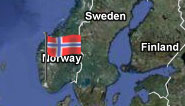
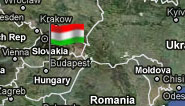
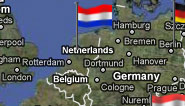
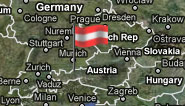
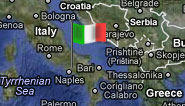
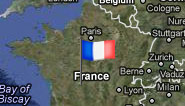
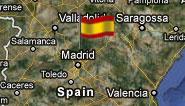
Rate and Review
Rate this activity
Review this activity
Log into OpenLearn to leave reviews and join in the conversation.
Activity reviews